Jews in the Soviet
Union from 1941
up to the end of the
Soviet era
(Part 8 of 8)
Anti-Semitism since 1985: Old Ideas Resurface
For the first time in Russian history, there is freedom of expression: no more censorship by the state, and open discussions in the media. A great number of new newspapers and magazines reflecting divergent political opinions are appearing in the streets. But this freedom of expression also has a shadow side: anti-Semitic and racist publications appear, often published by extreme nationalistic organizations.


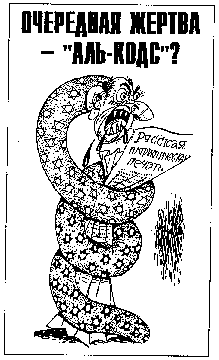
At your left,
"German National Socialism" from the series Ethnic History no. 5,
published by W. Prussakov, Moscow, 1994. This publication, a glorification of
the Hitler state, is "specially meant for would-be politicians and history
students."
In the middle,
"Alphabet for the Russian Nationalist," by the extreme nationalist
and anti-Semite A.P. Barkashov. His party,"Russian National Unity,"
advocates the "genetic cleansing of the Russian People" and the prohibition
of "mixed marriages," i.e. between Russians and "non-Russians."
Moscow, 1994
At your right,
Cartoon from "Al-Kuds" showing the familiar image of the "Jewish"
snake strangling the free press. "Al-Kuds" is published in Moscow
by the Palestinian Shaban Hafez Shaban. 1994
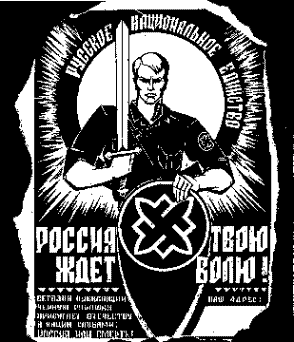
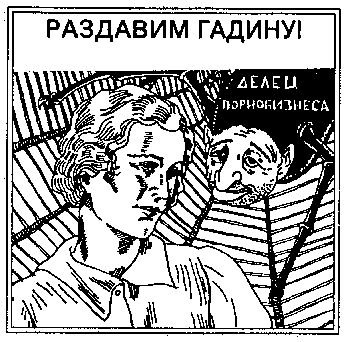
At your left,
propaganda leaflet from "Russian National Unity," showing the swastika-like
symbol and blackshirt uniform of the movement.
At your right,
Cartoon from "Narodnoje Delo" ("National Goal"): The Jew
as porno dealer. 1991
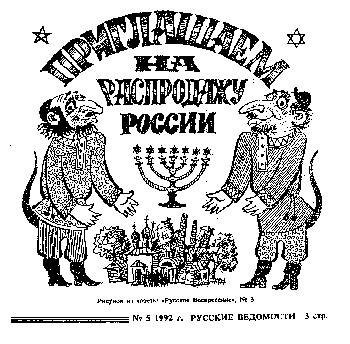
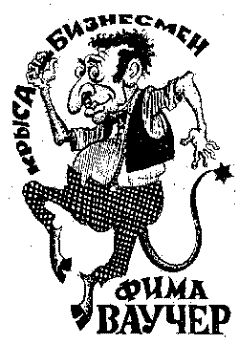
At your left, "Russkije
Wedomostii" no. 5, 1992
At your right,
"Russkoje Woskresenje Zhirinovskogo" no. 9, 1994


At your left,
cartoon and part of front page of "Za Russkoje Djelo" ("For the
Russian Cause") no. 1 (24), 1995. An article, "The Unknown Stalin,"
describes how Stalin's plans were obstructed by Jews who were omnipresent in
the state apparatus. Stalin, however, wanted to help the Jews by giving them
their own province, Birobidzhan, but it did not work out, "as Jews need
Russians to profit from." The article also states that 95 percent of the
Gulag camp commanders were Jews.
At your right,
Cover of a 1994 edition of the classic anti-Semitic publication by Henry Ford,
"Mezhdunarodnoje Evreistwo" ("International Jewry"). Henry
Ford was a staunch believer in the "Protocols of the Elders of Zion,"
although it was already known in the 1920s that the "Protocols" were
a forgery.
After a few years of economic reforms, part of the population has a substantially better standard of living. Many, however, are worse off and face the future with anxiety. This situation traditionally forms an ideal breeding ground for organizations that offer simple solutions for difficult problems: blaming one specific group for everything that has gone wrong.